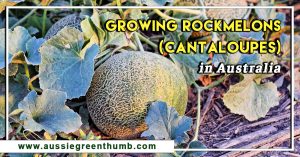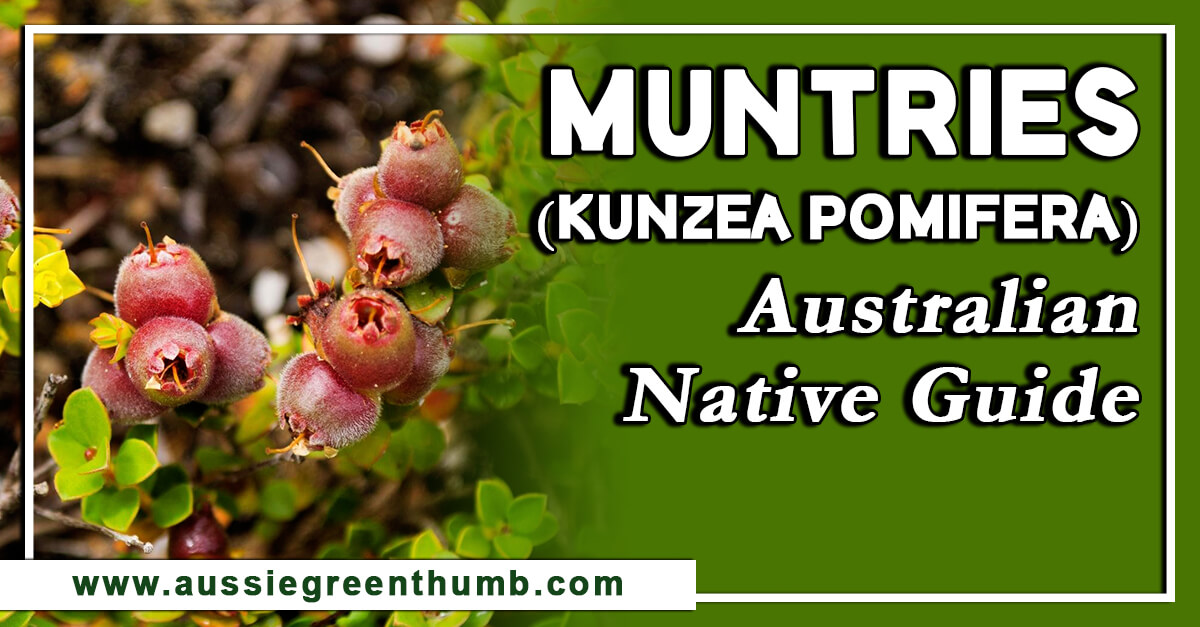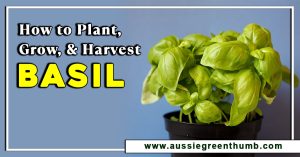An esteemed bush tucker and one of my favourite garden ornamentals in the Myrtaceae family, Syzygium oleosum is a truly exquisite specimen - full of life, colour, and character in outdoor spaces.
Lilly pillies are some of Australia's most popular bush tuckers, cherished for their showy edible fruits, fragrant foliage, and useful forms for home gardening.
I believe this particular species has so much to offer - long-lasting fluffy cream-white flowers, exciting bronzy new growth, attractive and tasty fruits, and stunningly fragrant oval foliage. Needless to say, this native tree will look fantastic throughout the year!
In today's growing guide, I will cover everything you need to know as a gardener to grow and care for Syzygium oleosum in your landscape. I will also explain how you can take advantage of this tree's delicious fruits in the kitchen.
More...
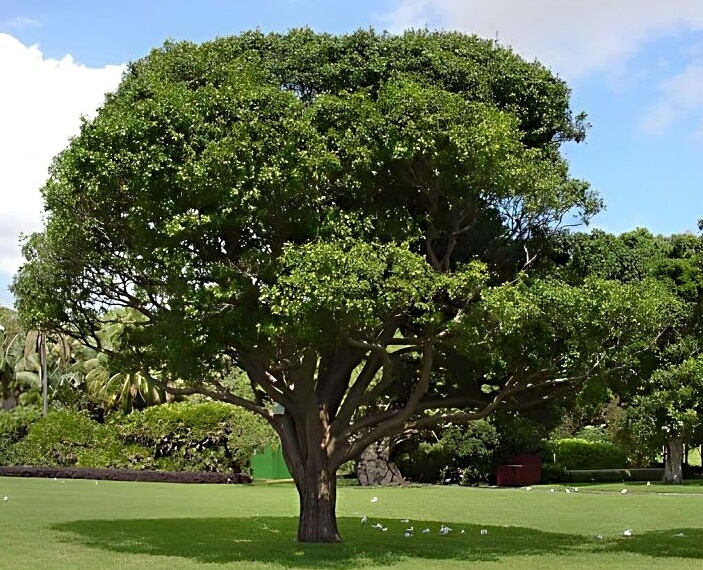
Source: GardensOnline
Family: | Myrtaceae |
|---|---|
Genus: | Syzygium |
Species: | S. oleosum |
Common names: | Blue Lilly Pilly, Blue Cherry |
Origin: | Australian native |
Location: | Outdoor |
Type: | Tree |
Growth: | 4 to 8 metres tall, 3 to 4 metres wide |
Sun requirements: | Full sun to part shade |
Foliage colour: | Green |
Flower colour: | Creamy-white |
Flowering: | Spring to winter |
Edible parts: | Fruits |
Maintenance level: | Low |
Poisonous for pets: | Berries are mildly toxic to cats and dogs if ingested |
Introducing Syzygium oleosum
Also known as the blue lilly pilly or blue cherry, Syzygium oleosum forms part of the Myrtaceae family of plants and is native to eastern Australia, commonly found along the coastal rainforests of New South Wales and north Queensland.
Today, it can even be found as far as western Australia and the northern territory. Being a rainforest specimen, the tree prefers temperate to tropical climates. It is considered fast-growing, reaching around 4 to 8 metres tall and 3 to 4 metres wide when cultivated in gardens.
Its roots are non-invasive, whether grown as a small tree or shrub. Young trees will fruit from years 1 to 3 onwards and the plant will attract many beneficial bees and insects to the garden.
Blue Lilly Pilly Plant Features
Its oval leaves have dark and glossy tops with pale green undersides, allowing the tree to add a shimmering presence to outdoor spaces with swaying winds.
The tree's dense foliage is very aromatic, releasing a wonderful fruity scent when crushed. Once matured, blue lilly pilly will also boast an attractive and dense canopy, perfect for adding some summery shade to gardens!
Landscaping Applications
- Edible feature tree
- Container gardening
- Screen or windbreak
- Native hedging
- Shade tree
How to Grow Syzygium oleosum
Blue cherries can be grown from seed or propagated using softwood cuttings. Alternatively, many reputable Australian nurseries stock young trees that can be easily transplanted into your garden.
Tucker bush and many other online Australian retailers stock this vigorous bush tucker plant!
Growing Blue Lilly Pilly from Seeds
- Collect fresh seeds from recently ripened fruit. Fruits can be sown whole or extracted from the flesh.
- Surface sow the seed into a quality seed-raising mix or potting soil, then water lightly.
- Keep in a warm, moist, and sheltered location with bright indirect light until germination occurs.
- Allow seedlings to develop for a season before transplanting into a larger container or the garden bed.
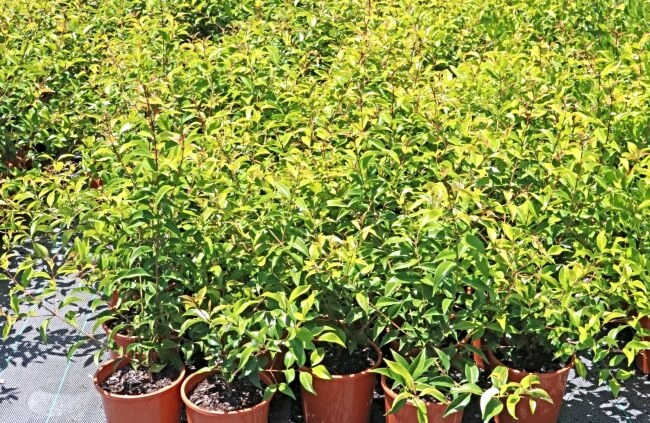
Source: The Plant Supply Co.
Propagating Blue Cherry Using Cuttings
- Take firm and healthy cuttings from the current season's growth using sharpened secateurs. Your cutting should be around 12-15cm long with some leaves and branchlets.
- Remove the lower leaves then plant the cutting into a prepared and well-drained container filled with quality propagation mix or rich potting soil.
- Water well after planting then keep in a warm, moist, and sheltered location for roots to develop.
Ideal Conditions for Growing Syzygium oleosum
Once established, this hardy tree can tolerate drought and sandy soils. However, like most fruiting trees, healthy conditions will ensure plentiful harvests, prolific flowering and denser foliage.


Get Your Free Guide:
Master Growing Australian Natives eBook
A Must Have Complete Guide for Every Australian Garden
Get Your Free Guide:
Master Growing Australian Natives eBook
A Must Have Complete Guide for Every Australian Garden
Soil Type
While the species can tolerate different soil types, it does prefer an enriched and well-drained soil that is kept moist throughout most of the year. A sandy loam soil enriched with some compost would work great!
Sunlight Needs
Depending on your location, full sun is often best for this fruiting tree. While it can withstand partially shaded conditions, the tree requires about 80-100% sunlight in most climates. A sunny position will ensure proper flowering and fruiting each season.
Growing Blue Lilly Pilly in Pots
Blue cherry can be reliably grown in containers if you'd prefer to keep it smaller and more shrub-like. Potted specimens will require more regular pruning to keep them tidy and compact.
Plant into quality potting soil, enriched with some organic materials, in a well-drained container for the best results. Repot once the plant has doubled in pot size or every 2 years - whichever comes first.
How to Care for Syzygium oleosum
As Australian gardeners, we're certainly spoiled with a large selection of hardy natives that don't require much fuss, and this tree is no exception! It's a low-maintenance addition that needs only basic care to thrive, fruit, and flower to its full potential.
Pruning Needs
Pruning is an essential element to caring for a blue cherry tree. More meticulous and regular pruning can help you keep it as a shrub if you don't have the space for a larger tree. If you do let it grow out naturally, you will still need to prune to encourage your desired shape and denser foliage.
Pruning will also avoid leggy growth with gaps. It is best to prune in early spring to promote more flowers and fruits then again after flowering to remove spent and damaged branches.
When to Fertilise Blue Lilly Pilly
If needed, you can feed your tree 2-3 times from spring to summer with a native fertiliser for fruiting plants. Alternatively, a balanced and water-soluble garden fertiliser can also work well. Be sure to delay harvests for a few days after fertilising.
Watering Blue Lilly Pilly
While tolerant to drought, this species enjoys regular access to water and moisture. Water regularly while young and during the tree's active growing seasons from spring to winter.
Watering can be reduced in winter but the soil should be kept slightly moist throughout the year.
Pests and Diseases
Luckily, this species of lilly pilly is not susceptible to its common family pest, phyllids. However, it can suffer from scale insect infestations. Scale can be treated with white oil but for everything you need to know about dealing with scale insects, check out our comprehensive guide:
Blue Lilly Pilly Bush Tucker Guide
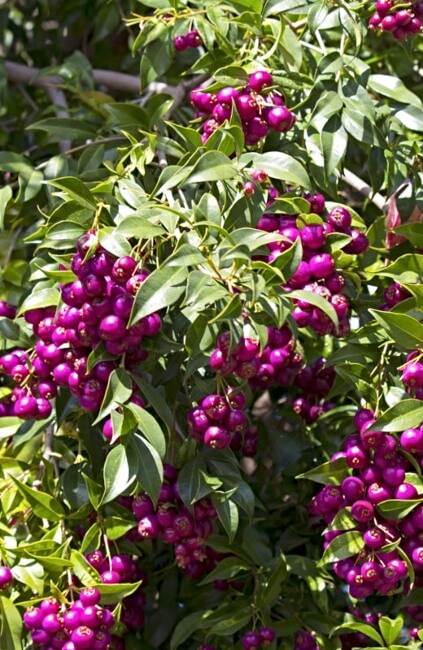
Source: Urban Tropicals
Traditionally known as the Wanduin by the Ganai people, blue lilly pilly was famed for its fleshy blue fruit and rich oil glands in its leaves. The fruits were traditionally eaten raw or made into a medicinal pulp to treat sore ears and skin infections.
Syzygium oleosum produces particularly palatable purplish-blue berries that have a crunchy and light texture with a mildly sweet taste when ripe.
After flowering, the berries grow in small clusters at branch ends. They can reach up to 25mm in diameter and feature a distinctive cross-shape or belly button on their ends. Berries will start out red and then mature with a darker magenta colour.
The berries have lovely hints of lavender and ginger flavours, suitable for many culinary applications in the kitchen!
Harvesting Syzygium Berries
After the long flowering season from late spring to early winter, the fruits will ripen, turning from red to purplish-blue. The skin will also become plumpier and more fleshy in appearance.
This should indicate that the berries are ready for harvest. Simply pluck the berries from the branches as needed, then rinse and enjoy!
How to Use Syzygium Berries
The berries are most commonly eaten raw as a refreshing snack, tossed into salads, or used to make jams, jellies, syrups, sauces, marmalades and more! The berries can enhance many sweet dishes and desserts like cakes, ice creams, sorbets, pastries and even muffins.
Check out this informative Lilly Pilly cooking guide from the Traditional Australian Cookery for exciting and delicious recipes you can follow at home!
Syzygium oleosum Frequently Asked Questions

Source: Matt Tomkins
Can you eat Syzygium oleosum?
The blue fruits from this tree can be eaten raw as a snack or cooked into jams, jellies, confectionaries, and more. As with any edible plant, it is always best to consume fruits in moderation to avoid any adverse side effects.
How do you propagate Syzygium oleosum?
The reliable propagation of this native species can be carried out using fresh seeds or firm cuttings from the current season's growth. Seed-grown trees can take far longer to bear fruits whereas cuttings will allow you to have a fruiting specimen in only 3 to 4 years.
What is Syzygium oleosum used for?
While the fruits make this species a popular bush tucker for edible gardens, the tree itself has a lot to offer gardens! It can be used as a feature or planted in groups as a screen or windbreak.
The dense canopy can offer wonderful summer shade, adorned with fluffy flowers and magenta fruits from spring to winter.
How much does a blue lilly pilly cost?
Pricing for this tree can differ slightly between Australian nurseries, but you should be able to pick a young tree up for between AUD$30 and AUD$50.
What is the lifespan of a blue lilly pilly?
In good conditions, a healthy lilly pilly can live for around 20 years or more! Lilly pillies are considered long-lived plants, especially when grown in Australian gardens.
When does blue lilly pilly start fruiting?
This species of lilly pilly is considered fast-growing, able to reach maturity in only a few seasons. On average, they will start to produce viable fruits for harvest from years 1 to 3 onwards.
For growing guides on other beloved Lilly Pillies, be sure to check out some of our most popular posts below:
Enjoy Stunning Summery Flowers with Syzygium oleosum!
So, there you have it, everything you need to know to grow and care for this specular native fruiting tree! Whether for its fruits, flowers, form, or year-round appeal, the blue lilly pilly certainly has a lot to offer Australian gardens.
Start growing your Syzygium oleosum today to start taking advantage of one of our most popular bush tuckers!
Published on April 17, 2024 by Lorri Hopkins
Last Updated on December 5, 2024

